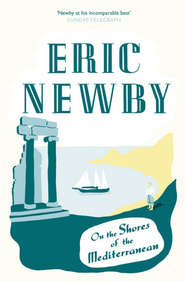По всем вопросам обращайтесь на: info@litportal.ru
(©) 2003-2024.
✖
Slowly Down the Ganges
Автор
Год написания книги
2018
Настройки чтения
Размер шрифта
Высота строк
Поля
About the Publisher (#litres_trial_promo)
Footnotes (#litres_trial_promo)
Maps (#ulink_d3f7d16e-c3d0-5055-84d4-0a33f1cdfa8a)
The course of the Ganges (#u0bd0b1e6-705b-59a6-b64b-100a347ca898)
From Hardwar to Bijnor (#ulink_d7aa9a56-aa3a-5231-b994-8d8697306463)
From Calcutta to Diamond Harbour (#litres_trial_promo)
List of Illustrations (#ulink_4c02727b-dc07-5e2e-98e4-5293e0707dbc)
Stuck fast on the Upper Ganges, south of Hardwar (#litres_trial_promo)
Newby carrying oars (#litres_trial_promo)
Wedding at a village near the bridge at Raoli (#litres_trial_promo)
Ram Baba, Lalta Prasad and Jagdish – our boatmen south of Fatehgarh, on the sands with a fire of stolen dung (#litres_trial_promo)
Early morning (#litres_trial_promo)
Between Allahabad and Mirzapur, with Bag Nath and Hira Lal (#litres_trial_promo)
Bullock-cart from the ferry at Araul to Araul Mankapur (#litres_trial_promo)
Devotee performing his morning puja (#litres_trial_promo)
Mendicant child on the great sandbank at Allahabad (#litres_trial_promo)
A bhur at Dinapore (#litres_trial_promo)
Beggars on the way from Akbar’s embankment to the Sangam at the confluence of the Jumna and the Ganges at Allahabad (#litres_trial_promo)
Dawn at the Sangam (#litres_trial_promo)
A cremation at Banaras (#litres_trial_promo)
Outside the post office at Banaras (#litres_trial_promo)
A goddess (#litres_trial_promo)
Wanda outside the Victoria Jubilee Club at Bankipore (#litres_trial_promo)
The Ganges at Sultanganj – the embarkation point for the island of Jahngira (#litres_trial_promo)
Arrival at Calcutta (#litres_trial_promo)
Introduction (#ulink_1219d32a-3030-5af0-8d7b-35f3e3510605)
This is the story of a twelve-hundred-mile journey down the Ganges from the place where it enters the Plains of India to the Sandheads, forty miles offshore in the Bay of Bengal, made by two Europeans in the winter of 1963–4. It is not an heroic story such as that of Franklin and his companions chewing leather on the banks of the Coppermine River but having got there (it is difficult to envy Franklin); of Ives seeing for the first time the great canyon of the Colorado; of Garnier reaching the headwaters of the Yangtze; or of Bailey and Morshead travelling sixteen hundred miles on foot through the gorges of the Tsangpo. We were born too late for such feats, even if we had had the courage and determination to perform them. We were even prevented from emulating the painter James Fraser’s long journey to the sources of the Bhagirathi Ganges – one which is made by numerous pilgrims – by the coming of the snow and our own meagre resources. It is not a book about India today; neither is it concerned with politics or economics. It is certainly not erudite, as must be obvious to anyone who has the patience to read it. It is about the river as we found it.
In most standard works of reference the Ganges does not even rate an entry in the tables which list the great rivers of the world, for it is only 1,500 miles long from its source in the Himalayas to the Bay of Bengal. The Nile, the Amazon, the Mississippi/Missouri are all more than two and a half times as long as the Ganges. The Irtysh and the Yangtze are both twice as long. The Congo, the Yellow River, the Mackenzie, the Niger, the Danube, the Euphrates, the Brahmaputra and the Indus, to name only a few, are all longer. But, all the same, it is a great river.
It is great because, to millions of Hindus, it is the most sacred, most venerated river on earth. For them it is Ganga Ma – Mother Ganges. To bathe in it is to wash away guilt. To drink the water, having bathed in it, and to carry it away in bottles for those who have not had the good fortune to make the pilgrimage to it is meritorious. To be cremated on its banks, having died there, and to have one’s ashes cast on its waters, is the wish of every Hindu. Even to ejaculate ‘Ganga, Ganga’, at the distance of 100 leagues from the river may atone for the sins committed during three previous lives.
In almost any bazaar in India one can buy a little, oblong paperback book. It is rather like a book of tickets for some Eastern tram service. It contains two works, bound up together. They are the Gangastottara-sata-namavali and the Ganga-sabasra-namastotra. They enumerate the 108 and the 1,000 names of the Ganges, all printed metrically and in columns so that they can be chanted devotionally; but unless one is an expert in Sanskrit, as was Colonel Pickering in Pygmalion, it is impossible to understand them. She is The Pure, The Eternal, The Light Amid the Darkness, The Cow Which Gives Much Milk, The Liberator, The Destroyer of Poverty and Sorrow, The Creator of Happiness, to give only a few of her names.
(#litres_trial_promo)
The Ganges was not always so highly regarded. When the Aryan invaders first entered India they were more impressed by the Indus. It was only later that they gave Ganga the highest position, as Sursari, River of the Gods – perhaps because they had found out what European scientists discovered later: that its water has remarkable properties. Bottled, it will keep for at least a year. At its confluence with the River Jumna which, particularly at the time of the great fair which takes place there every January, contains dangerous numbers of coli, the Ganges itself is said to be free of them. At Banaras thousands drink the water every day at bathing places which are close to the outfalls of appalling open drains. They appear to survive. The presence of large numbers of decomposing corpses seems to have no adverse effect on it. (Before setting off we were advised that when we wanted to make tea sedimentation could be accelerated by stirring it with a stick of alum; but we never did this.) Taken on board sailing ships in the Hooghly at Calcutta it is said to have outlasted all other waters. In spite of this many Hindus have reservations about how far downriver they are prepared to drink it. Some say as far as Dhulian, near the place where the Ganges under the name of the Bhagirathi and later the Hooghly, takes off for Calcutta. The inhabitants of Soron, on the Upper Ganges far north of cities like Allahabad and Banaras, believe that this is the last point at which the water is really good because, they say, no sewage has yet entered it. (At Soron there is a large tank, reputed to be fed by the Ganges, the waters of which have the peculiar property of dissolving the bones of the dead within three days of their being deposited in it.)
It is certainly responsible for more good than evil. Even cholera, one of the great killers, does not go down the river. It is born in the stagnant waters of the Delta in Bengal and ascends it carried by pilgrims who visit the sacred places in hundreds of thousands every year. The great nineteenth-century epidemics started in Bengal, spread to Hardwar, one of the holiest places of all on the Upper Ganges; then north-west into the Punjab and from there overland into Afghanistan, Persia, Russia and finally into Western Europe. Even today the seasonal rise in the incidence of cholera coincides with the great religious fairs which take place on the banks of the river.
The Ganges first sees the light of day when it emerges from an ice cave above Gangotri, 13,800 feet up in the Garhwal Himalayas. Hindus believe that it was from this cave that Ganga, the daughter of King Himavat and the nymph, Mena, was persuaded to come down to earth by Bhagiratha, a descendant of King Sagar, in order to redeem from hell the souls of the sixty thousand sons of the king who had been reduced to ashes by a holy man whom they had slighted.
There is some dispute between the devotees of Siva and Vishnu, the two principal sects of Hindus, as to which god assisted at the birth of Ganga. Vishnuvites believe that she rose from the big toe of Vishnu’s left foot, Sivites say that to break her fall on earth Siva allowed her to flow through his hair, which can still be seen hanging in the form of icicles from the roof of the cave.
At Hardwar, with twelve hundred miles of its course still to run to its nearest outlet to the sea it has already fallen 12,800 feet and here, only 1,000 feet above the sea, it begins to irrigate the land with the aid of wells and canals, and to give electric power. On its way to the sea it passes through three states: Uttar Pradesh, Bihar and West Bengal. In them live 150,000,000 people, almost a third of the entire population of India. Of these nearly half live in Uttar Pradesh. There are 69,000 villages in Uttar Pradesh with populations of less than 500 and in this state more than eighty per cent of the cultivated holdings are of less than five acres (some are as little as half an acre). For much of its course the Ganges is not a navigable river in the real sense of the word, although, in spite of the fact that millions of cubic feet of water are drawn off from it, its strength is constantly renewed by the rivers that flow into it. It is in the 600-mile stretch between Allahabad and Rajmahal that it really gathers strength. At Rajmahal, in full flood, it goes down at 1,000,800 cubic feet a second which is greater than the maximum discharge of the Mississippi (the Thames at Staines discharges at 6,600 feet a second in full flood). Fortunately it brings down with it vast quantities of silt which it deposits free of charge for a season before sweeping it further downstream. A Victorian engineer, Sir Charles Lyell, estimated that 335,000,000 tons of silt were discharged each year at Ghazipur on the Middle Ganges. ‘Nearly the weight of sixty replicas of the Great Pyramid.’ A useless comparison. ‘It is scarcely possible,’ he goes on, ‘to present any picture to the mind which will convey an adequate conception to the mind of the mighty scale of this operation, so tranquilly and almost insensibly carried out by the Ganges.’ Whether some smallholder in Bihar, watching his half-acre slipping noisily into the water and his family being swept downstream on top of a haystack would regard the operation as being either tranquil or insensible is open to question. No one knows for certain the depth of the alluvial silt in the Delta.
Like the black sheep of the family sent to Australia, the Ganges is always trying to straighten itself out. It sets its current strongly against one bank, undercutting it and leaving sluggish water on the other shore on which new deposits are made, until it finally breaks through and begins the whole process afresh. The Gangetic Plain is riddled with old, dead watercourses that the Ganges has forgotten about. At Kasimbazar in Bengal, where one of the first British trading stations was established in 1658, there is a flight of steps from which it is said that Warren Hastings used to come ashore. Only the river has gone, leaving a few pools choked with water hyacinth. The once illustrious city of Kanauj on the Upper Ganges is now so far from the actual stream that, passing it in a boat in the dry season, one does not realise that it is there at all. Rajmahal, once the capital of Bengal, was left high and dry, three miles from it, in 1863. Later, in the seventies, it was seven miles from it. Now the Ganges has returned. Too late, the city is moribund. The Bhagirathi, the short, eighty-mile stretch which connects it with the Hooghly, is more or less dry for eight months of the year. Power-vessels bound for Calcutta have to make a 400-mile detour through East Pakistan to reach the port which is itself always in danger of suffering the same fate as Rajmahal. Four hundred miles out in the Bay of Bengal the sea is discoloured by the silt brought down by it. The Ganges justifies the one hundred and second name given it in the Gangastottara-satanamavali – ‘Roaming About Rose-Apple-Tree Island’, which is India.
Note: All diacritical marks which correctly should appear in Indian names have been omitted in this book.
Gangastottara-sata-namavali
(The 108 names of the Ganges)
CHAPTER ONE Long ago on the Ganges (#ulink_df548bfd-e6f7-5af5-9015-e8f7673101ec)
Gange Cha Yamune Chaiva
Godavarai Saraswati
Narmade Sindhu Kaveri
Jale Asmin Sannidhim Kuru
(O Holy Mother Ganges! O Yamuna! O Godavari! Saraswati! O Narmada! Sindhu! Kaveri! May you all be pleased to be manifest in these waters with which I shall purify myself!)
Prayer to the Seven Sacred Rivers recited by
every devout Hindu at the time of taking his bath
I love rivers. I was born on the banks of the Thames and, like my father before me, I had spent a great deal of time both on it and in it. I enjoy visiting their sources: Thames Head, in a green meadow in the Cotswolds; the river Po corning out from under a heap of boulders among the debris left by picnickers by Monte Viso; the Isonzo bubbling up over clean sand in a deep cleft in the rock in the Julian Alps; the Danube (or one of its sources) emerging in baroque splendour in a palace garden at Donaueschingen. I like exploring them. I like the way in which they grow deeper and wider and dirtier but always, however dirty they become, managing to retain some of the beauty with which they were born.
For me the most memorable river of all was the Ganges. I had not seen it for more than twenty years since the time when, as a young officer, I had spent six months on its banks at a remote military station some fifty miles from Kanpur.











